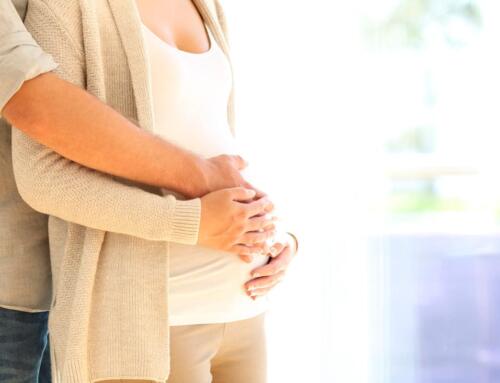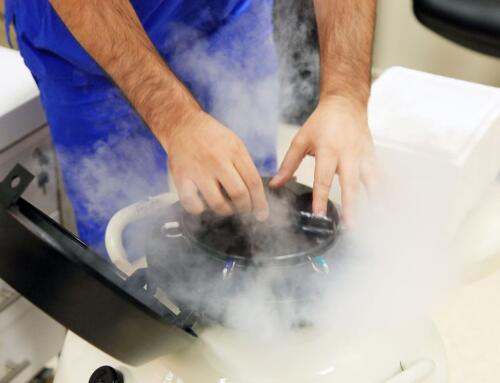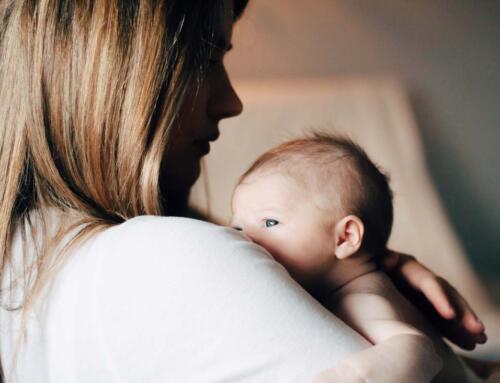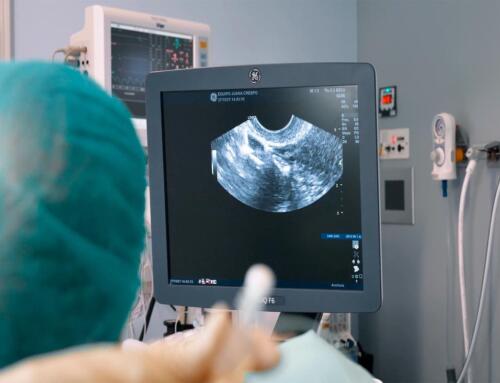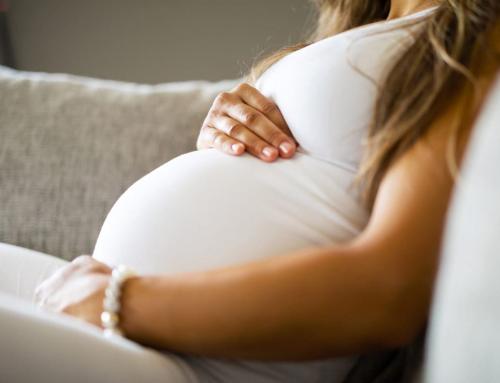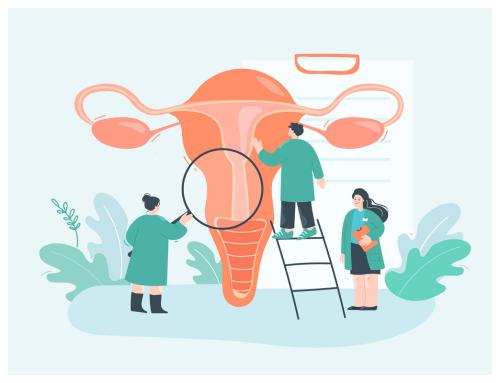If you are trying to have a baby and your gynecologist has told you that you have a retroverted, tilted or retroflexed uterus, you may be wondering if this is a fertility problem.
It is normal to worry and wonder if, for example, the sperm will be able to effectively get inside a tilted uterus, or if, there happen to be positions during intercourse, which increase the chances of getting pregnant.
The reality is that, for most women, having a retroverted uterus is not a fertility problem, but sometimes this morphological alteration is related to other pathologies which can hinder pregnancy, such as endometriosis.
What is a retroverted uterus?
Women have a retroverted, retroflexed or tilted uterus when it has naturally developed a backwards tilt towards the rectum and spine. This means that the lower part of the uterus is directed backwards and not towards the abdomen and bladder, as an anteverted uterus normally does.
As you can see, the uterus can not only have very varied morphologies, but it can also adopt different positions. Positions that are absolutely functional and not pathological. Therefore, if you have a retroverted uterus, it is possible that your gynecologist will not treat this situation because, although it may cause some discomfort, it is not a disease.
What causes a retroverted uterus?
Despite advances in gynecological and reproductive medicine, it is still not known with certainty why many women are born with this anatomical variation. It is possible that you were born with a retroverted uterus, but it can also happen that your uterus, was originally in a normal position, but eventually rotated for different reasons:
- Due to the enlargement of the uterus that occurs during pregnancy. If the uterus rotates during pregnancy, it is common for this organ to return to its normal position after the first three months of gestation, as a result of the fetal weight.
- Occasionally, uterus retroflexion may occur during the postpartum period. This is a transitory consequence due to distension or tearing of the ligaments that support the uterus.
- As a consequence of the weakening of the pelvic ligaments, many women suffer from this condition when they reach menopause.
- A retroverted uterus can also be caused by an accumulation of pelvic scar tissue adhesions resulting from diseases such as endometriosis, salpingitis or pelvic inflammation. In these cases, surgical intervention may be necessary to remove these adhesions.
What are the symptoms of a retroverted uterus?
Many women who have this anatomical deviation are not even aware of it, as it does not always display symptoms. However, some women do notice:
- Frequent pain during sexual intercourse, so they try other positions to avoid discomfort.
- Pain in the lumbar or pelvic area during premenstrual syndrome and menstruation.
- Back pain during intercourse.
- Urinary incontinence or urine retention depending on whether the cervix rests on the bladder or the urethra, preventing its exit.
- Urinary tract infections.
- Difficulty using tampons.
- Chronic constipation due to the pressure exerted by the uterus on the rectum.
What the uterus hides
We already know that a retroverted uterus is not a fertility problem, but sometimes it can be associated with other pathologies that do hinder pregnancy, such as endometriosis. Therefore, it is essential to thoroughly study your uterus to rule out or treat possible problems.
Although it may seem surprising to you, many women come to our clinic who, after several IVF attempts in other clinics, have not been able to get pregnant and we then discover that they have undiagnosed malformations in the uterus.
This can happen due to a lack of expertise coming from the gynecologist and also because the morphology of the uterus changes throughout the menstrual cycle and certain defects can be hidden depending on the time at which the examination is performed.
Therefore, it is necessary that you go to a gynecologist whose experience and skill allow you to discover everything that your uterus may be hiding.

Why is it necessary to study and diagnose a retroverted uterus?
Even though your tilted uterus may be nothing more than a morphological aspect that you were born with, it is advisable to have your case carefully studied. As we already mentioned, this uterine retroversion may be due to a pelvic inflammatory disease, to possible adhesions, or it may be caused by endometriosis.
If your inverted uterus is not only a morphological issue, but is associated with endometriosis or pelvic diseases, these pathologies, and not the position of your uterus, are the possible cause of your fertility problems.
In addition, if you are undergoing IVF treatment (or artificial insemination), it is also advisable to know which is the position of your uterus. This way. it can be possible to prevent possible complications during the transfer, when inserting the cannula with the embryo.
In these cases, the experience of the gynecologist will be essential because, if the position of the uterus is not taken into account when transferring the embryo, this important step could result in pain or small bleedings that will hinder or prevent the nesting of the embryo in the uterus. A large part of the success of IVF also depends on the expertise of the gynecologist at the time of the embryo transfer.
It is also important to determine the position of your uterus, whether it is in anteversion or retroversion, before you undergo certain medical procedures such as hysteroscopy, uterine curettage or placement of an intrauterine device (IUD). Your gynecologist should know which is the orientation of the uterus in relation to the cervix to avoid any discomfort and reduce possible risks.
Retroverted uterus treatments
In general, this morphological alteration does not usually require any type of treatment.
However, if you have a lot of discomfort or if the cause of your retroverted uterus is due to diseases such as severe endometriosis, salpingitis or pelvic inflammation, you may need surgery. This way, we can remove the adhesions and get your uterus back to its natural position and be fully functional.
In Equipo Juana Crespo we are specialists in fertility repairing surgeries that allow us to solve various disorders such as endometriosis, adenomyosis, adhesions, uterine malformations, etc. that affect your reproductive system and complicate your desired pregnancy.
If you are trying to get pregnant and have not succeeded yet, call us at +34 961 042 557 or write us at information@juanacrespo.es. We will study your case to find out what is the position of your uterus and what is hindering your pregnancy. Only then we can define the most appropriate personalized treatment for you to achieve pregnancy with a retroverted uterus.



